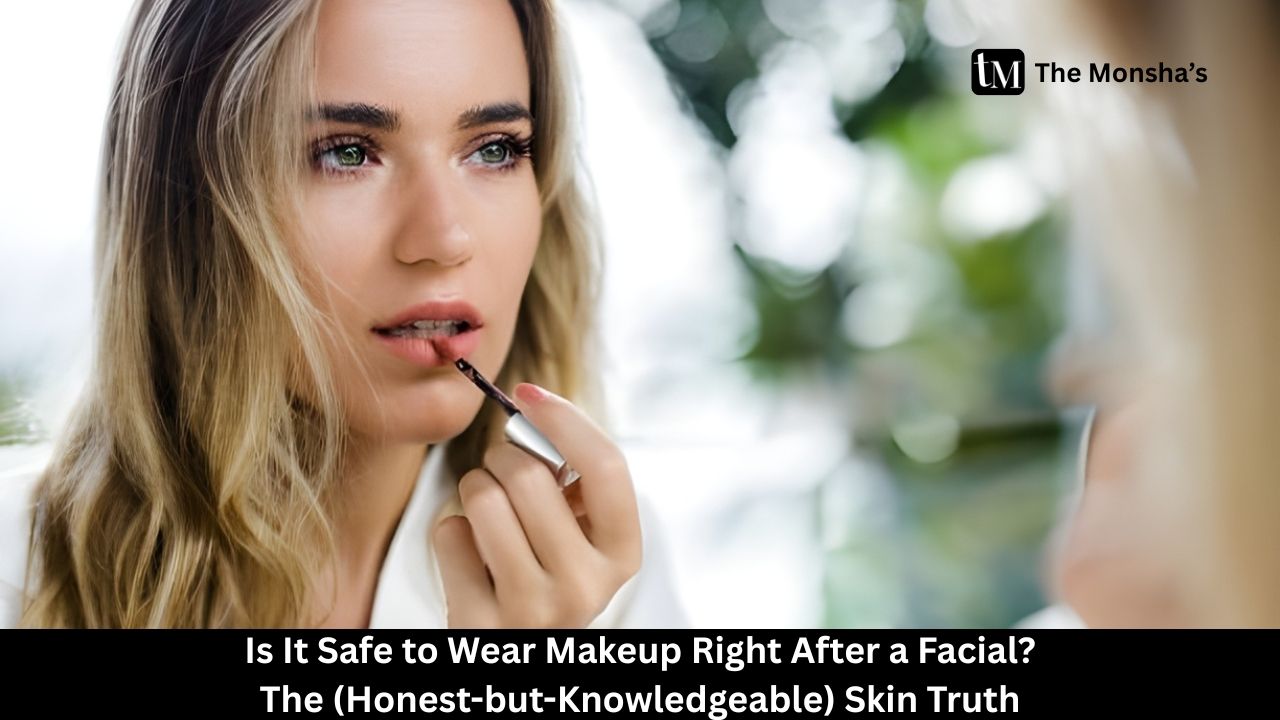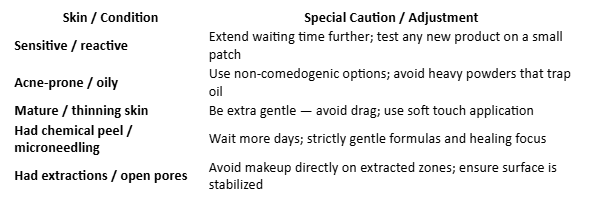
I drag myself home after a facial (skin fresh, soul lighter) and the first impulse: “Let me slap on a full face and head out.” But wait — your skin is not done with its drama yet. That freshly exfoliated, steamed, massaged canvas needs care — not more cover-up. In this ultimate guide, we’ll dive deep into when, how, and why makeup after a facial is a delicate decision.
By the end, you’ll be armed with a no-BS checklist, insights from skin biology, expert quotes, and a plan to let your skin glow without sabotage. (Plus a table for quick decision-making — because tired brains love visuals.)
What a Facial Really Does to Your Skin
Before we decide “makeup now or later?” we need to know what’s going on beneath that post-spa glow.
In short: your skin is in recovery mode.
Here’s what can go wrong if you try to contour or conceal too soon:
Derms and aestheticians routinely recommend skipping heavy makeup right after.
Even a recent clinical review says corrective makeup can be used after dermatologic procedures, but with careful timing and choice of formulas.
This part feels like the most asked question. The answer: it depends.
Here’s a general guideline:

Some aestheticians suggest a minimum of two hours before you even think of makeup — but foundation and heavy formulas are still off the table in that window.
Also, skin doesn’t come with a timer. Rather than rigid hours, watch signals: no raw stinging, skin surface feels stable (not fragile), no oozing or scabbing.
Maybe you have an event, you must step outside, or you just can’t. So here’s how to do it with minimal damage:
✅ Best types to choose
A note: in dermatologic frameworks, “corrective makeup” is sometimes allowed post-procedure — but only if the skin is ready and product choice is carefully constrained.
Even if makeup is on hold, skin care is not. In fact, recovery care is more critical now.
✅ Do’s
❌ Don’ts
Skin barrier health is king. When the barrier is intact and functioning, your skin resists bacteria, retains moisture, and looks radiant. When it’s compromised, everything goes haywire.
Because your skin is not the generic “face” in articles. Adjust based on your situation:

Also, some clients break out after a facial — not because facial failed, but due to clogged pores, sensitivities, or “purging.” Post-procedure breakout doesn’t always mean disaster — just treat lightly, hold off strong actives, and monitor
If any check fails — don’t push it. Let your skin call the shots.
Q: Can I use concealer or just spot-cover?
Yes, if skin allows — use a light, breathable concealer, applied gently in thin layers, only on the concerned spot. Do not load full face coverage.
Q: What about lipstick, mascara, or lip gloss?
Lip color (as long as lips weren’t treated) is generally safer, but treat lips gently. Mascara or eye makeup is more delicate — if eyelids were steamed or involved in treatment, wait until they feel stable.
Q: Will makeup ruin my facial results?
If used too soon or too heavily — yes, makeup can mask or negate benefits (clogging, irritation, preventing absorption). But if timed and applied smartly, it doesn’t have to.
Q: Should I avoid makeup entirely after every facial?
Not always. After mild facials, many can resume wear sooner. But when in doubt, choose patience over risk.
Your facial is an investment — don’t sabotage it with impatience. Let your skin glow on its own, protect its barrier, and reintroduce makeup only when your skin lets you.
If you ever doubt — zone wise: skip the foundation, go for minimal, breathable formulas, and always, always clean your tools.